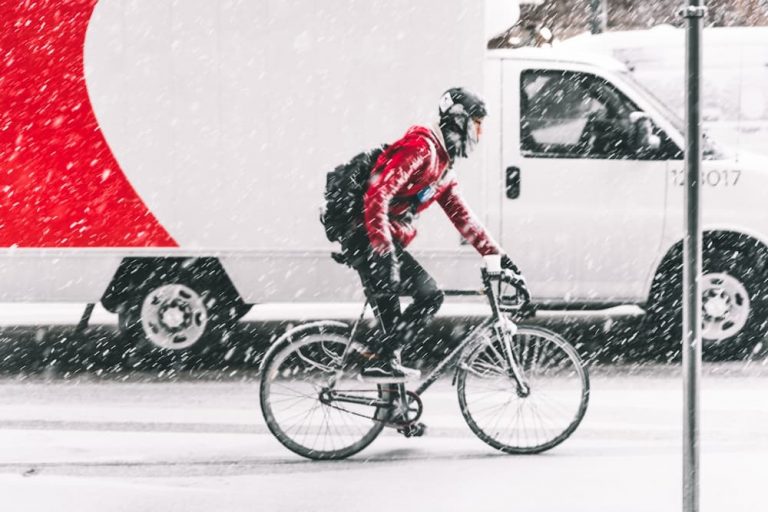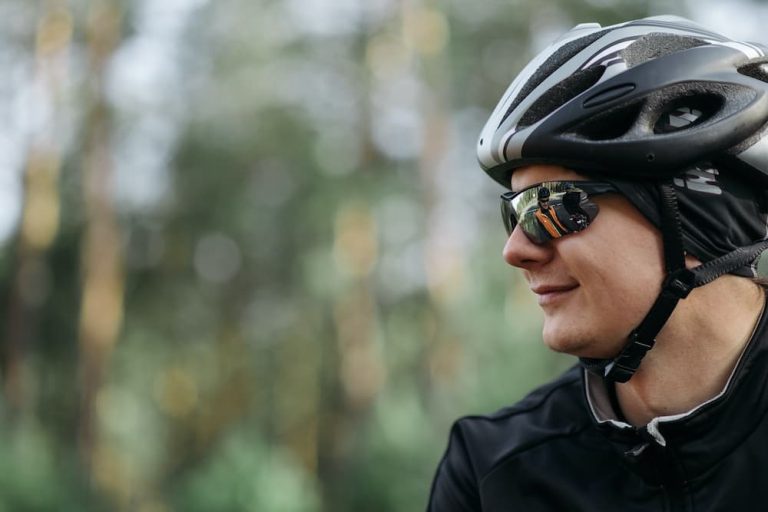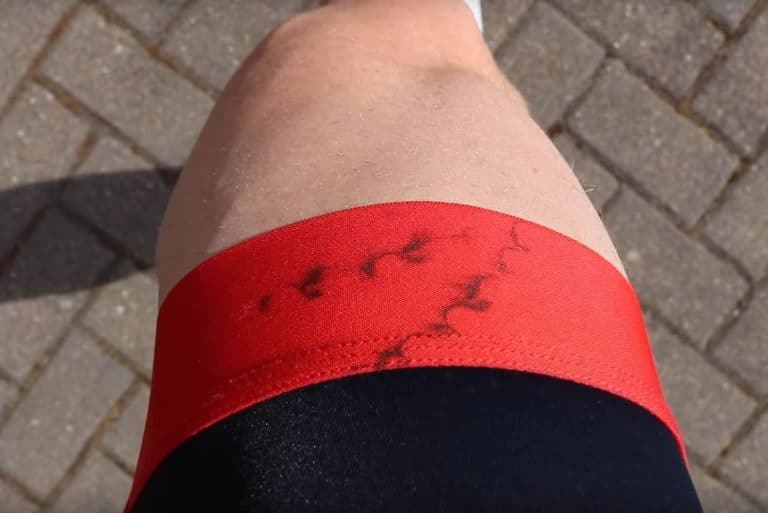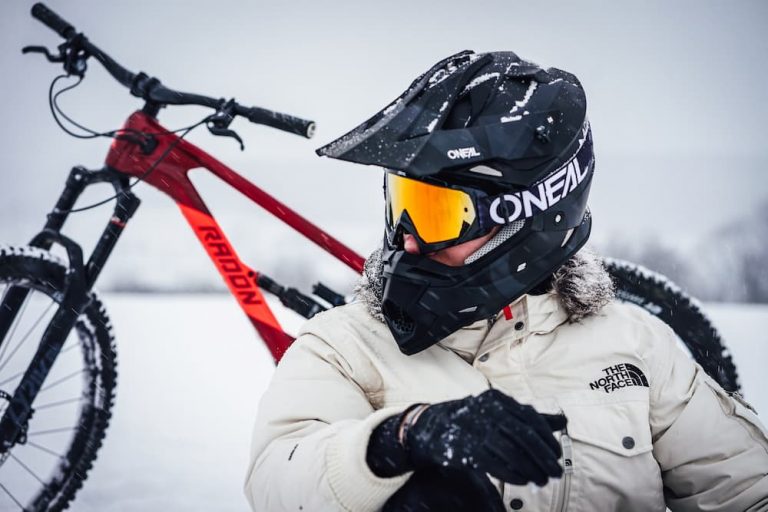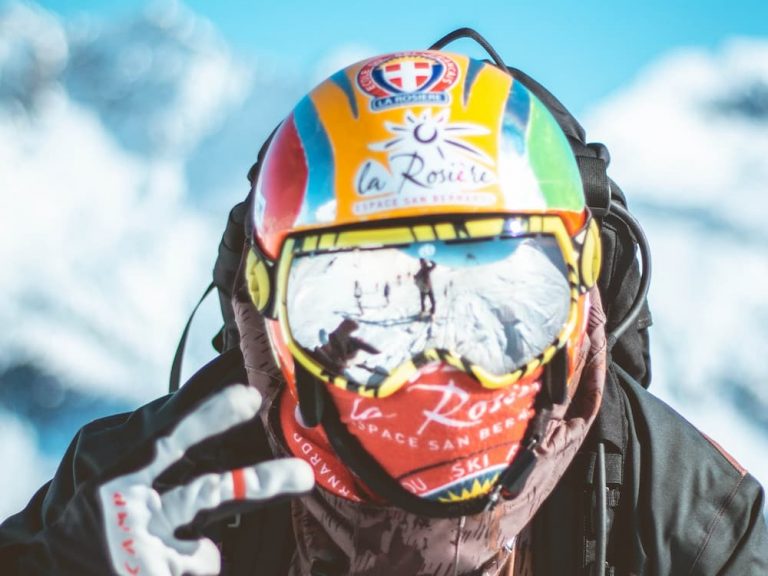Cycling In Cold Weather – Tips On Keeping Warm In Freezing Cold
Chilly winters are for blankets, fireplaces, and hot cups of coffee. And then there are cyclists, who prefer taking their bikes out for a ride in these freezing cold months. Believe it or not, many cyclists love to toughen up themselves and sharpen their cycling skills even during cutting cold days.
If you’re one of those who have made it up in their minds that you are all set to ride your bicycle on the glacial roads and snowy terrains, you might want to be warned that cycling in cold weather is not the same as cycling in other conditions, especially if it’s your first time riding in subzero conditions.
Contents
Key Takeaways
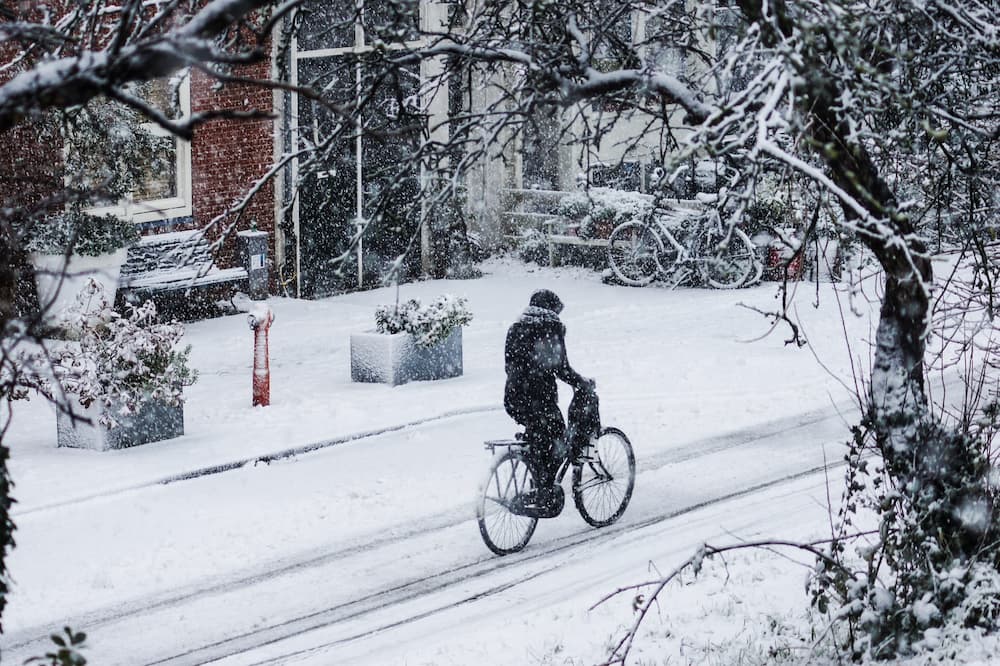
| Key Takeaways |
|---|
| 1. Layered Dressing: Start with a moisture-wicking base layer, add insulating middle layers, and top with a wind-resistant outer layer. This combination ensures warmth and flexibility. |
| 2. Hydration Strategies: Use insulated water bottles with warm fluids. Store bottles upside down to prevent the caps from freezing, ensuring you stay hydrated even in freezing temperatures. |
| 3. Enhanced Safety Measures: Regular bike maintenance becomes crucial. Use wet lubricant for the chain and frequently check brakes and tire pressure. Carefully select your routes to avoid icy or slippery conditions. |
| 4. Unique Winter Experience: Embrace the serene beauty and quiet of winter cycling. It offers a different perspective and challenges that can be both exhilarating and meditative. |
| 5. Body Awareness: Monitor your physical response to the cold. Adjust your cycling intensity and take breaks when necessary. Being aware of your body’s signals is crucial to prevent overexertion in cold weather. |
Benefits of Cycling in Cold Weather
If you’re still in two minds about getting out of your bed and riding away with the chilly winds, our first section might convince you to do otherwise.
If you are determined to combat the winter blues, you would be glad to know there are numerous benefits you can get out of cycling in cold conditions.
Related reading: How To Wash Bike Shorts?
Better Physical Strength
First things first, pedaling through thick snow and icy roads improved your energy levels by a considerable amount. If you are steady with your cycling sessions, you will likely produce more energy, raising your strength limits without doing extra movements.
Moreover, in winter, as you are clothed more heavily and the bicycle you pedal carries a lot more weight in relation to extra gear, you can naturally build more muscle and gain further strength.
Improves fitness
If burning calories and staying in shape for the summer beach body is your motive to cycle during the chilly days, you might have the perfect excuse to put on all the extra warmers and head out with your ride.
Cycling on deep snow covered paths and combating the piercing breeze is difficult. It takes more effort and muscle power to cruise through the usual ways.
And because your motive is to become warmer quickly, the number of times your pedal per minute increases automatically. These results in more calories burnt per minute, along with building muscle strength in the lower body.
Fixes Mood Disorders
During winter, with daylight shortened by a few hours, people tend to suffer from more mood swings. These winter blues are further increased when people stay indoors without much movement and exercise.
When you cycle out in this freezing weather, even if you ride out casually for less than half an hour, antidepressant chemicals like endorphins are produced in your brain, which is the best stress buster to relieve anxiety and make you feel ‘happier.’
New Experience
If you have never tried cycling in the biting cold winters, this could be a whole new cycling experience for you and one that you would love if you love cycling.
With all the hurdles, challenges, and distinct environments, you would have the opportunity to learn and know yourself as a cyclist. One of the new skills that you might learn firsthand is to layer clothes and carry on all the extra weight while enjoying the empty, snow-filled roads.
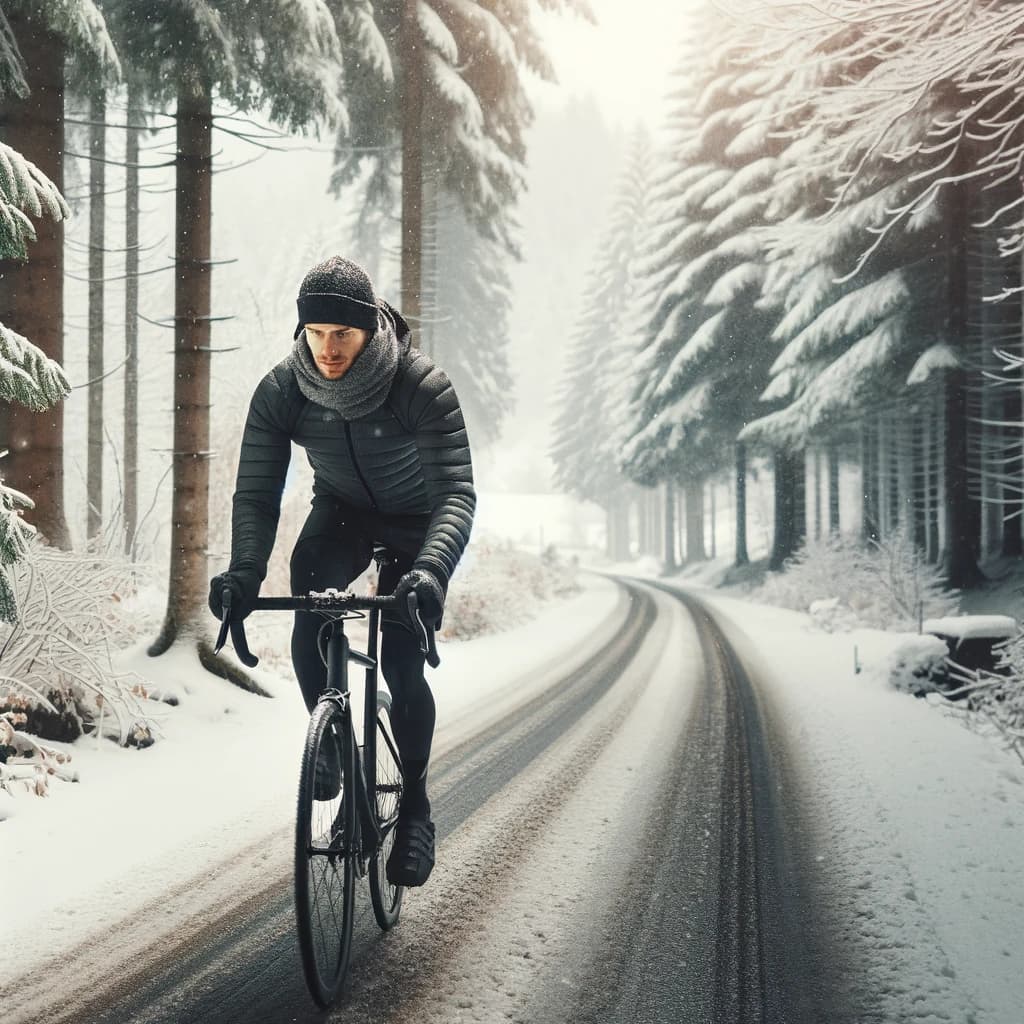
Challenges of Riding in Cold Weather
Before you put on your mitten and 3 layered sweaters and ride out to the snowy, slippery roads, you may want to make yourself aware of the hurdles and challenges that you might face on the way, particularly if you are a first-timer riding in cold weather.
Can Be Bike Damaging
You’ll have to be wary of the cold weather and rougher rides if you don’t have a sturdy, premium-quality bicycle. This is because snow, ice, and rocky hurdles during the winter can have a much harder impact on your bicycle, causing permanent damage to the wheels, chains, and sometimes to the brake as well.
Riskier Roads
With ice formation and melting ice on roads, the paths that you usually drive can become more slippery during winter. Sometimes, snow and ice formations become a great challenge to overcome. This is one reason professional cyclists advise newbies to avoid riding during extreme weather conditions.
Increased Perspiration
Staying warm is not the only problem when you are riding out in the teeth-biting climate. You can always follow the right techniques to layer clothing but doing so can lead to sweat excessively under all the warmth, especially when you have cycled a fair distance.
Increased perspiration can lead you to have slipping ear warmers and sweaty palms. All of which you can avoid by simply following the right ways to dress up, as we have discussed briefly in the next section.
Frozen Fingers and Muscle Cramps
Dressing up and staying warm for winter cycling is widely discussed for good reasons. Without the right clothing layers, you would get frozen, literally.
From bloodshot cheeks to frozen fingers, riding in cold weather has its discomforts for the riders. Moreover, for people who haven’t been moving much, starting cycling without much warm-up can lead to muscle cramps as well.
Dressing Up for Cycling in Chilly Winter
The importance of dressing up properly for cycling in chilly winters has no bounds. Without appropriate layering of the right clothes, you could become ill and catch frost bites mid-ride. Here’s a brief overview of how to cover up to keep yourself warm while cycling.
Before starting out with each piece of cycling garment, you may want to remember that it is to get carried away and overdress. If you are a beginner in the art of layering clothes for winter cycling, you may run trials for how much works for you. Here’s a more general rule for dressing up.
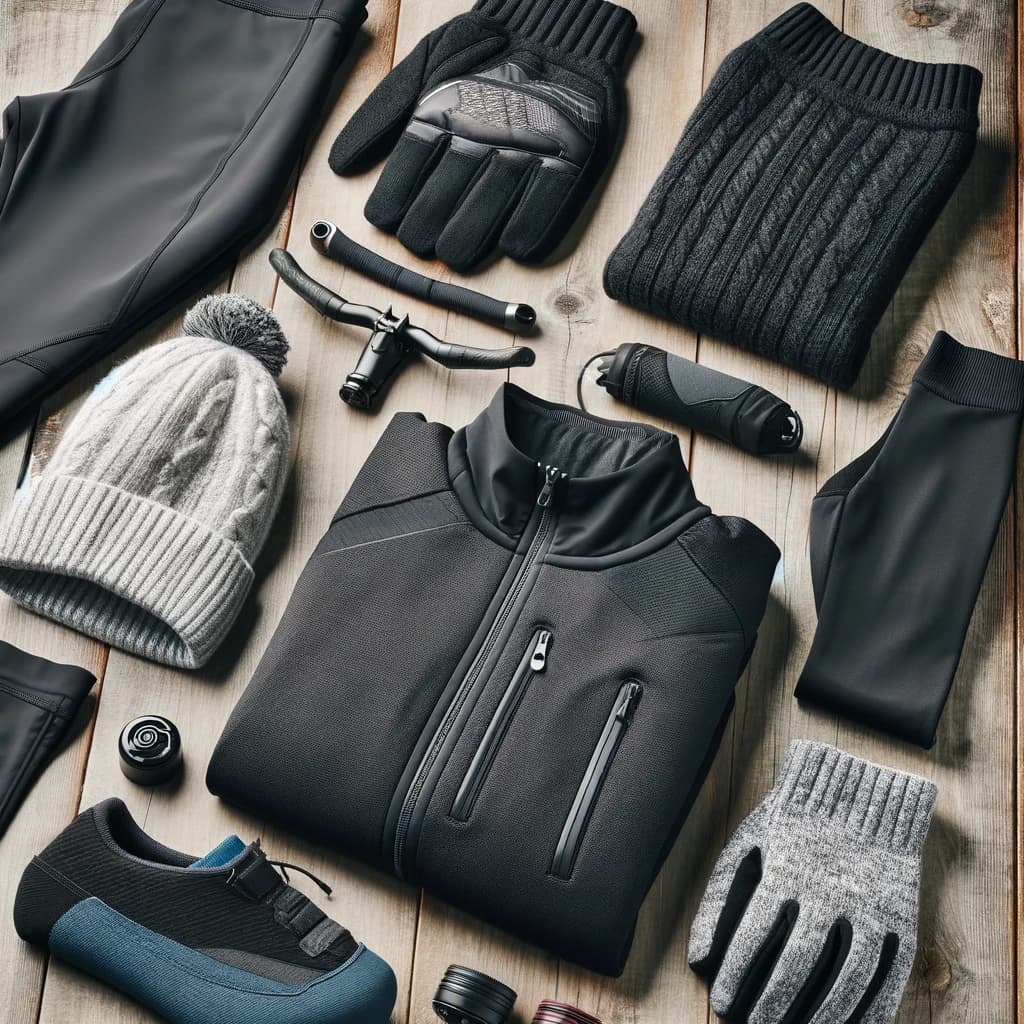
Base Layer
The primary concern of cyclists in colder regions is having clothes on that are insulating enough to retain heat and keep the rider warm. This is what layering clothes do for cyclists. The spaces in between the fabrics will have heated air trapped, and such can only be achieved with the right fit and material of the fabric.
The wear that is contacting your skin must be a wicking fabric, best if it is made with polyester materials. What this lightweight, sweat-preventing would do is it would absorb most of the perspiration off your skin. This would ensure both your body and the first layer of the t-shirt are dried all the while.
Next Layers
For the next layer, it is best to wear something breathable and insulating. If you wish, a long-sleeved lightweight t-shirt, preferably with zippers, can be a great option. It is imperative that this layer of clothing is more breathable than the first. A third layer is optional and will depend on the temperature. You can opt for a long-sleeved jersey if the weather is getting too cold.
Top Layer
The outer layer of synthetic is important as it works as the main wall of protection against chilling winds and snow. Not only is this layer working as a wind blockage, but this apparel also serves as a thermal wall.
For an all-weather fabric, cyclists always prefer nylon over other fabrics like cotton. You may want to avoid cotton both as the first layer and last as it does not serve the wicking purpose.
If you can get an update on the weather forecast to know if the air is dry, you can consider wearing a vest as the top layer for the core body. If the weather conditions are freezing with cutting winds, you can go for nylon jackets, that are not too bulky.
Head Area
Your entire head region, if neglected, can throw your layers and layers of dressing under the bus. Due to high rates of heat loss through the forehead and face area, covering this part of your body is as crucial as wearing 3 to 4 layers of shirts.
For covering the head, as well as keeping ears warm, consider investing in ear warmers, caps, and headbands that are stretchable breathable, and keep your skin dry even when you sweat profusely. One of the better alternatives may be helmet covers, where you can wear your headband under the helmet as well.
In that case, remember to make sure that the weight on your head is light enough so you don’t go around wobbling to shift the center of gravity. Further, you can also invest in a balaclava with adequate breathability so that it does not cause fogging on the sunglasses.
The head also includes the eyes, which require protection as well as clarity of vision. Finding a sunglass that does not become hazy can be difficult. Look for a photochromatic lens that is both weather resistant and lightweight in nature. In addition to clarity and coverage, it is most imperative that the sunglass is designed with a premium quality lens.
Related reading: Best Winter Bike Helmet Reviews & Guide
Arms and Hands
Arm warmers are optional if you are wearing an insulating long sleeve shirt with great fitting and are always dependent on whether it is too cold. Usually, for regions where the temperature varies over the hours, you may want an arm warmer that can be taken out or rolled up without hassle.
For arm warmers, look for ones with silicone grippers so they don’t slip away. The fabric should be weatherproof and the fit should be just right.
While protecting your arms with an extra layer can be a choice for colder regions, the hands need protection against the cold. For your hands, many cyclists prefer gloves with underlines to keep the sweat and cold away.
One of the more vital features of the glove you should use must be whether 100 percent moisture proof is or not. Additionally, ensure that the gloves are well fitted, have a great grip, and have wicking features, to begin with.
Even if you’re fully covered from head to toe while cycling in the cold, don’t forget the hand warmers at home. They can be a valuable sort of heat in the rough cold. Some hand warmers provide heat for up to 10 hours. Pack a few extras, just in case.
Amongst hand warmers, you can get quite a variety:
- Air-activated hand warmers: They start heating up the moment you take them out of the packaging. Might pick up the speed of the heating process if you shake it a little. These aren’t reusable.
- Gel-filled hand warmers: Featuring a button on the inside, gel-filled hand warmers activate upon a simple push – of the button of course! After activation, the gel gets harder and it stays warm for about 90 minutes. They are reusable. All you have to do to reactivate them is place them in a pan with warm water and wait for them to return to their liquid form.
- Electric rechargeable hand warmers: The fanciest of the bunch. Generally, these offer temperature controls. Found in both USB chargeable and battery-operated versions.
Legs and Feet
If you live in a region that gets extremely cold, one of the first and most basic apparel rules for cycling in winter is to keep your knees protected and fully covered. Many people prefer cycling shorts for more ventilation and space.
Unfortunately, for temperatures where you get an icy chill, that cannot be an option. In that case, you may have to invest in leg warmers, similar to arm warmers ones that are easy to wear, fit well, and can be taken off instantly if needed. You may also want to avoid extra baggage around your legs like flaps and fold, and instead opt for fleece leggings or shorts.
Cycling in the cold without socks is out of the question. Thus, for the feet, look for socks that are light enough but do not sag off as you wear them.
For that, socks made of synthetic fibers are an incredible option as they perform well in keeping the feet sweat-free, while blocking most of the chilled airs out of the feet. The material of the sock must have thermal retaining properties and our feet are in contact with the pedals and are most vulnerable to losing all the body heat.
Gearing Up to Cycle in Cold Winter
Carrying your cycling gear and additional accessories can always come in handy when you are cycling in such extreme weather. This is because winter roads and conditions can be quite laborious on bicycles and their tires. You never know when you’ll need tools to fix certain parts.
Besides, you may require extra gear for safety, storage, hydration, and extra protection. Here are a few basic bike accessories you might need when cycling in a subzero environment:
- Bike Lights
- Reflectors
- Insulated Hydration bottle
- Extra clothing
- Whistle and torch or light set
- Extra batteries
- Road beanie or gore balaclava
Tips for Riding in Cold Weather
Dressing up properly and keeping oneself adequately warm during the rides is just one phase of safely riding in cold weather. Here are a few more important tips that you might want to keep in your winter cycling preparation list:
Start slow and Warm-up
One of the most crucial strategies that allow or disallow cyclists to continue cycling in cold weather is how they start. Instead of overextending and overwhelming oneself with long hours of cycling initially, take a few days to have short rides out.
One way of doing this is by skipping a day or two between your cycling days. If you are riding a fair distance away from your home, you may want to save your energy and take up transportation to the destination.
Run Tire Checks
To take on the impact and to get better traction and grip, your bike tires need to exert the right pressure on the road surface. Apart from getting wheels that are fatter than usual bicycles, you’ll have to make sure the tire pressure is on the lower end range.
If your tires are pumped to the brink, their impart absorbing capabilities decrease. It is significant that cyclists run a tire pressure check before every ride.
Clean the Bike
With all the snow, oil, and dirt, bicycles get dirty during the colder days quite easily, and hence require more looking after than usual. Before each ride out, make sure your chains, rims, and brakes are thoroughly cleaned, while any snow or grime is out of the way.
If you have cleaned your bike parts after a ride, always remember to use chain lubricant suited to winter to prevent chain drying and excessive friction. Once cleaned, covering the bicycle and protecting it from further environmental harshness is equally important.
Ride Your Old Bike
When you are heading out on winter roads, one of the mistakes that you are prone to make is switching up to a new, unfamiliar bicycle. Riding a bicycle you already know and are used to gives you more confidence and protection. Instead of getting a new ride, you can modify your old one to fit winter cycling.
Adding knobbier tires, studded ones if one wants more traction, and lowering the tire pressure are just some of the upgrades that might work for you better than shopping for a new ride. You can also add reflectors and safety flags to your bicycle if it already doesn’t have those.
Safety Precautions
Winter’s days are unpredictable and can get dark without warning. For such ridings, you must always remember to carry bike lights that have a rechargeable battery in them.
Light up your bicycle in both the front and rear sides, and wear reflective cycling clothes if you wish. For cyclists who have electric bikes running on batteries, charge up your battery and make sure to store it away the night before. You can also invest in a cover for batteries for better keeping.
How to Cycle In Freezing Cold?
Now that we’ve kept the preparation part of cycling in icy winter to the side, it is wise to brush up on your cycling lessons for what to do when you are on the roads.
Choose the Right Lane
During the winter, it is always safer to choose the center road of the right lane so that you have ample visibility to other drivers, cyclists, and pedestrians. You can also ride in the bicycle lane if there is any, but make sure to stay away from gutters, poles, and other obstacles.
Allow More Braking Time
Winter roads are usually more slippery, and hence tires lose grip on the surface. When you apply the brakes, make sure you foresee a considerable stopping distance and time before your halting spot. Braking suddenly can cause the wheels to get locked in causing undesirable accidents.
Take Up the Right Routes
Know your roads well before riding out during snowy days. Some roads usually have more traffic and congestion than others. To avoid potential risks, it is always preferable for a cyclist to take up emptier roads.
However, be careful if you riding at low light in emptier streets. Take more time to plan the routes you want to take and make sure you have more known options if one doesn’t work.
Corner Carefully
Cornering is a challenge on icy roads, even for the best of riders. To corner your bicycle properly, you would first have to predict and pick the right line. This way you also stay away from manhole covers, as well as debris spots.
To corner the right manner, you’ll have to shift your weight on the outside foot, while you have your inner pedal in an upward position. This helps find cyclists more balance, as well as a grip while cornering the bicycle.
Frequently Asked Questions
What are the best materials for winter cycling clothing?
For winter cycling, look for clothing made from materials like merino wool, fleece, and synthetic fabrics designed for cold weather. These materials provide insulation, are breathable, and wick away moisture to keep you warm and dry.
Final Thoughts
As we’ve explored, cycling in cold weather brings its unique set of challenges and joys. From mastering the art of layering to navigating icy paths, it’s a test of resilience and adaptability. I’ve found that with the right mindset and preparation, these frosty rides can be incredibly rewarding. They not only bolster physical strength but also offer a serene beauty that’s hard to find in milder conditions.
Embracing the cold on two wheels isn’t just about enduring the chill; it’s about appreciating a different side of cycling. The crisp air, the quiet roads, and the satisfaction of overcoming harsh elements – all these add up to an experience that’s as exhilarating as it is challenging. Remember, the key to enjoying these rides lies in respecting the weather and equipping yourself appropriately.
So, to fellow cyclists gearing up for the winter: stay warm, stay safe, and relish the unique thrill that comes with pedaling through the winter wonderland. Each snowy trail and icy bend is a story in the making, a chance to deepen our connection with both cycling and nature.
Related Articles

